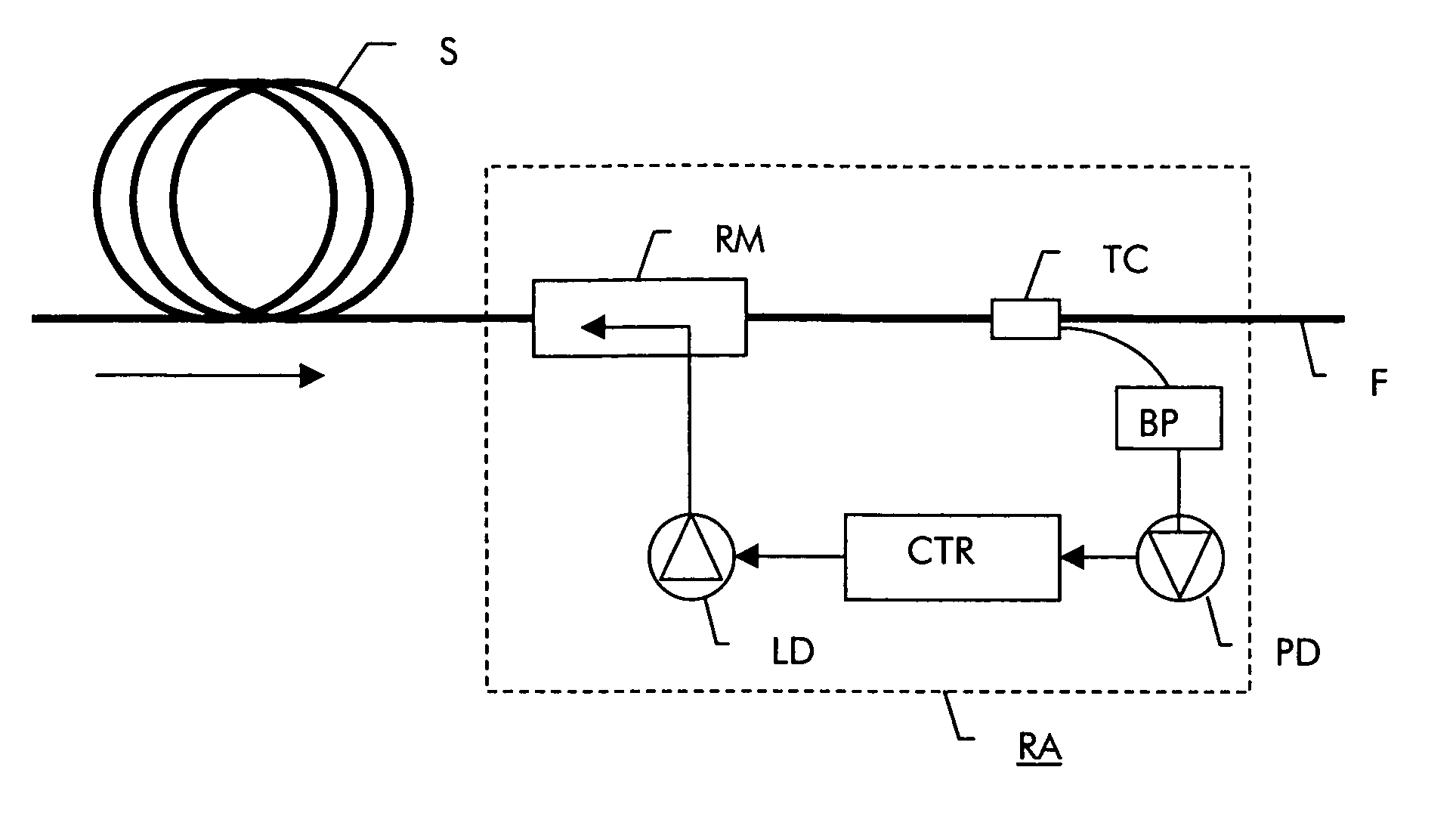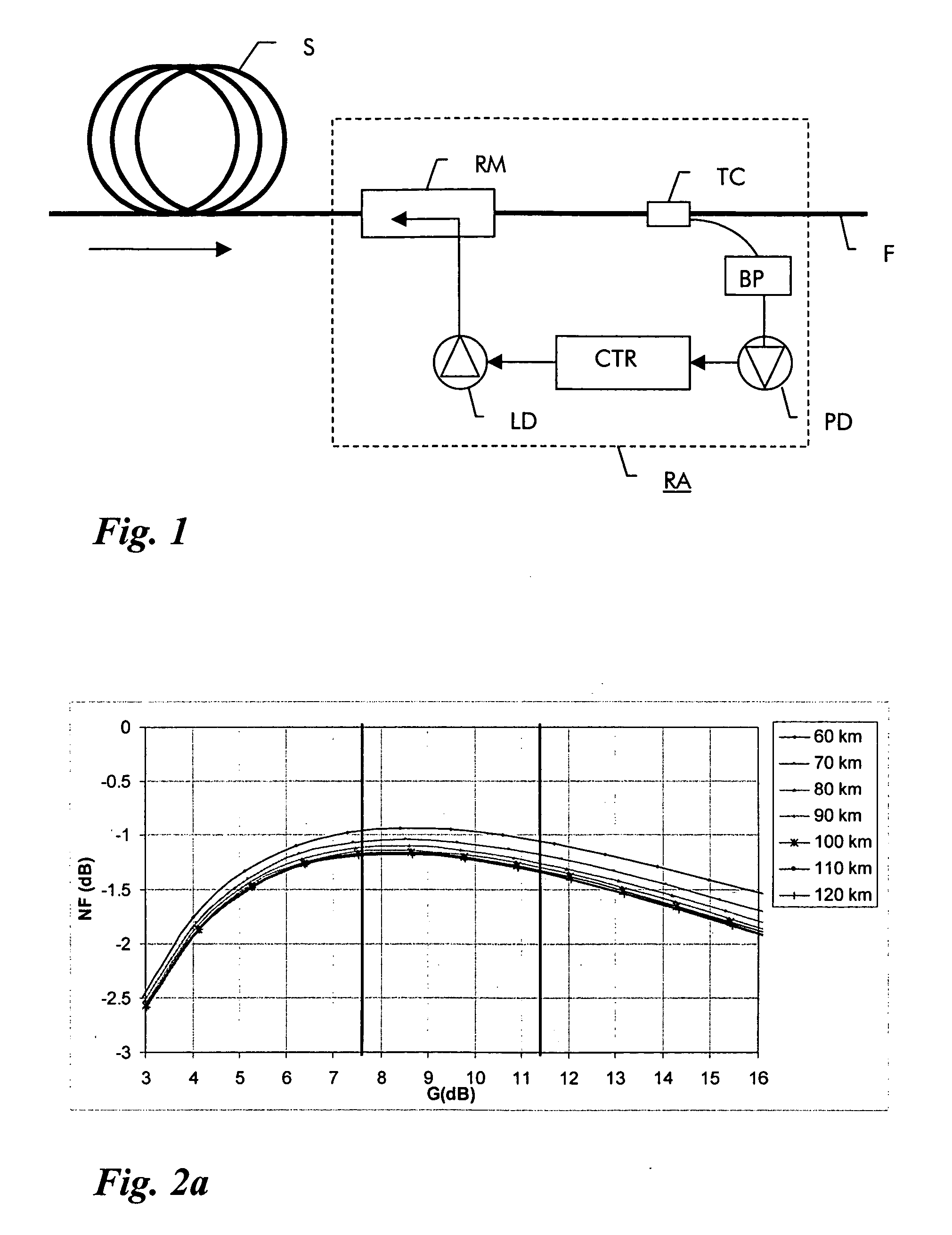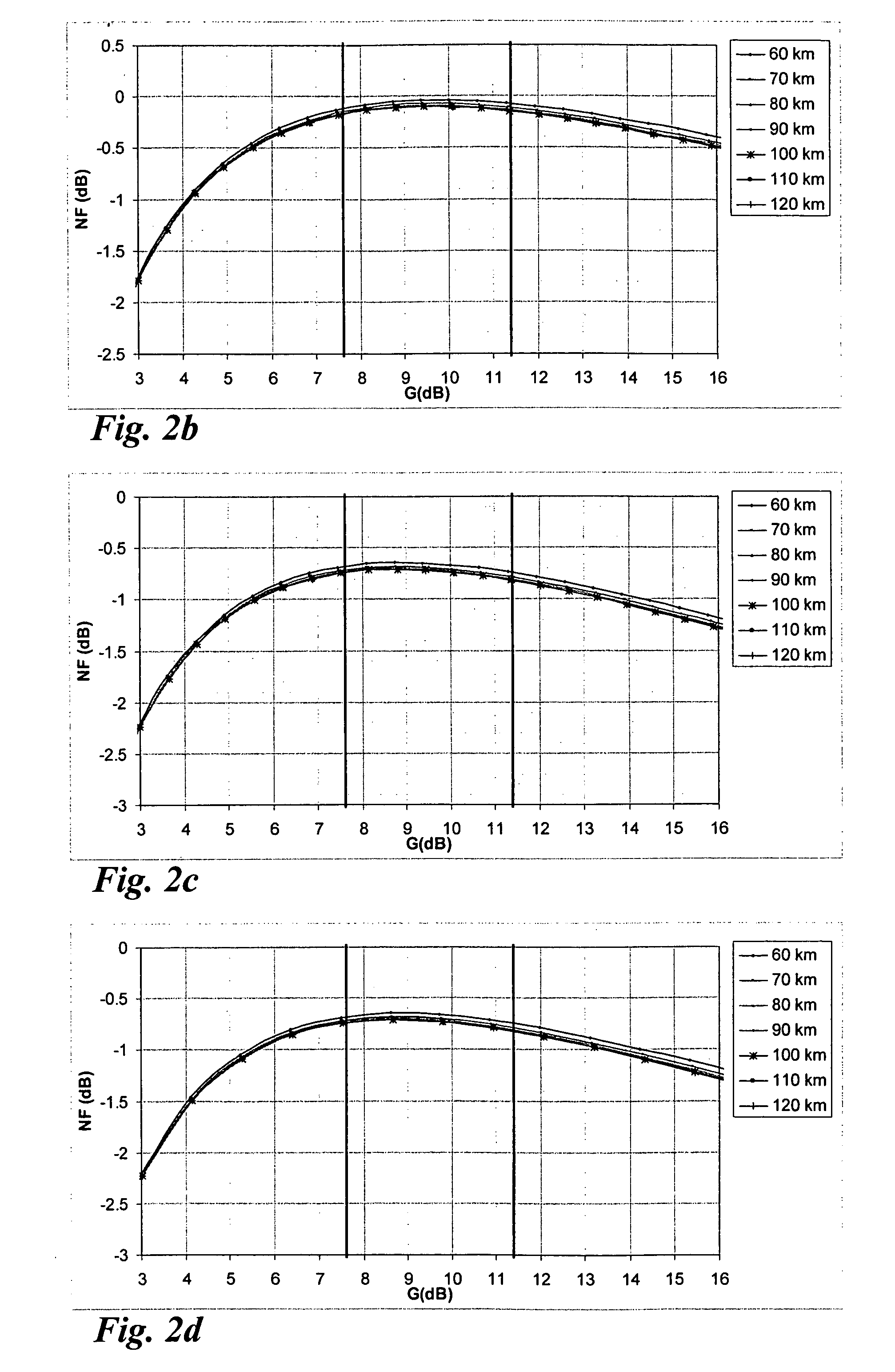Method of determining the gain characteristic of a distributed Raman amplifier
a raman amplifier and gain characteristic technology, applied in the field of optical fiber communication systems, can solve the problems of inability to accurately predict the performance of raman amplifiers, gain, gain equalization and noise spectrum, local losses, etc., and achieve the effect of accurate and simple method of determining
- Summary
- Abstract
- Description
- Claims
- Application Information
AI Technical Summary
Benefits of technology
Problems solved by technology
Method used
Image
Examples
Embodiment Construction
[0013] A Roman amplifier which is to be characterized by the measurement according to the invention is shown in FIG. 1. The Raman amplifier RA uses as gain medium a preceding fiber link F, the Raman gain characteristics of which need to be determined. The Raman amplifier RA as such contains a pump source LD and a Raman multiplexer RM which couples the pump light from the pump source LD in backwards direction into the fiber link F. The pump light causes stimulated Raman scattering in the fiber span length S when a signal traverses the link and thus amplifies the signal. A tap coupler TC is provided at the output of the Raman amplifier which serves to extract a small fraction of the amplified signal light from the fiber and feed it via a band-pass filter BP to a photodiode PD which determines an output power value of the signal.
[0014] In operation, the pump light power must be adjusted to the required Roman gain. Such adjustment, however, requires thorough knowledge of a parameter ch...
PUM
 Login to View More
Login to View More Abstract
Description
Claims
Application Information
 Login to View More
Login to View More - R&D
- Intellectual Property
- Life Sciences
- Materials
- Tech Scout
- Unparalleled Data Quality
- Higher Quality Content
- 60% Fewer Hallucinations
Browse by: Latest US Patents, China's latest patents, Technical Efficacy Thesaurus, Application Domain, Technology Topic, Popular Technical Reports.
© 2025 PatSnap. All rights reserved.Legal|Privacy policy|Modern Slavery Act Transparency Statement|Sitemap|About US| Contact US: help@patsnap.com



